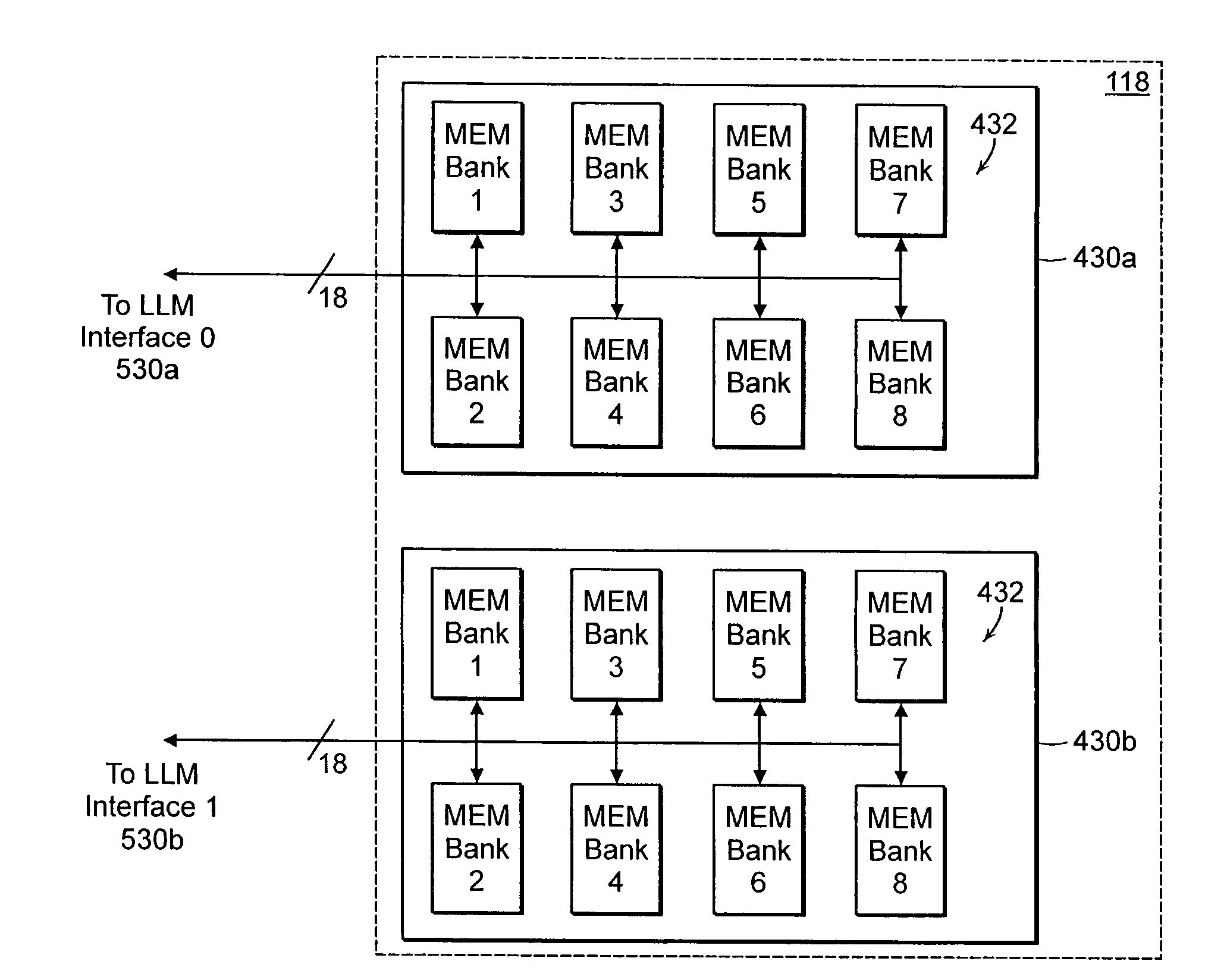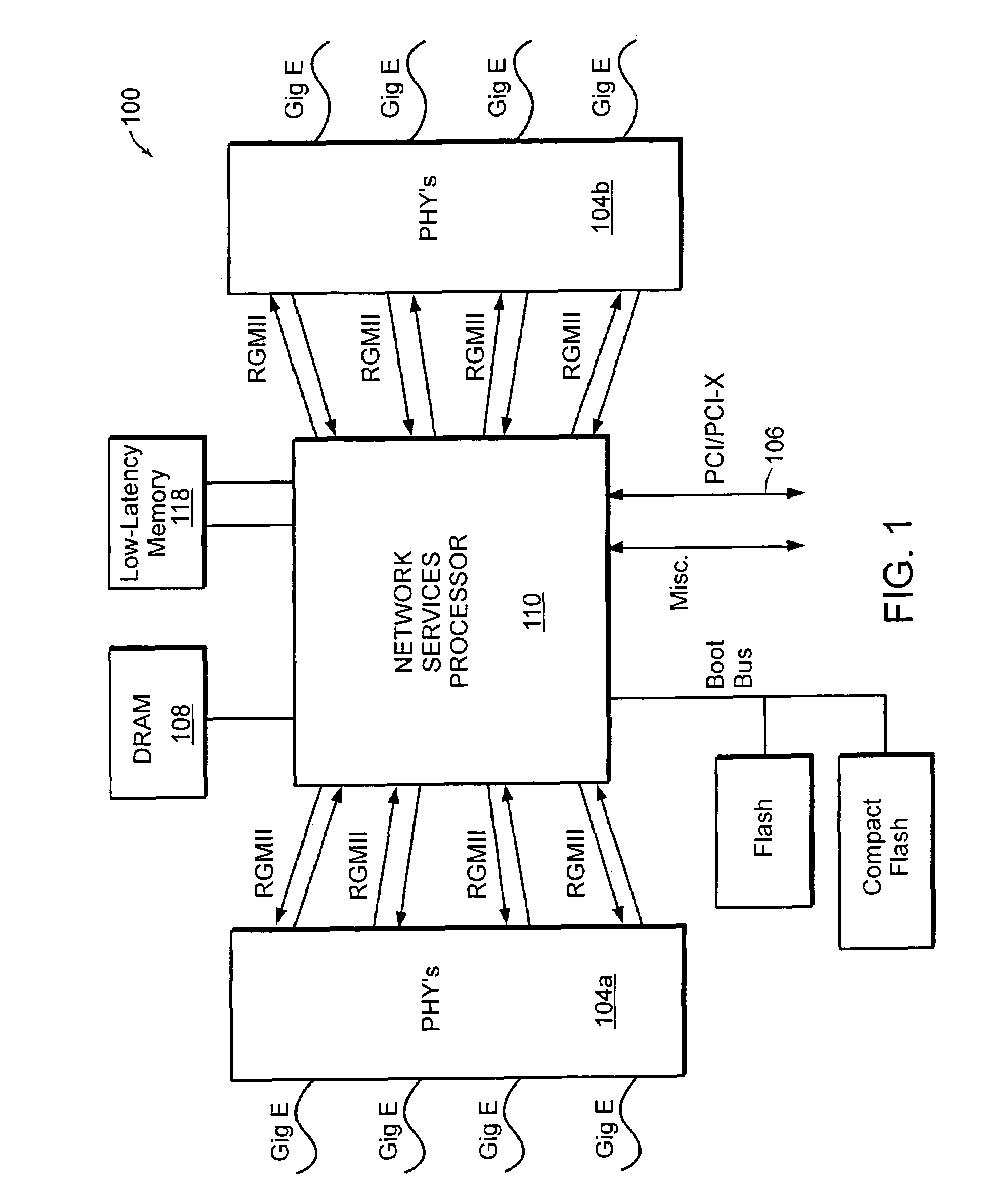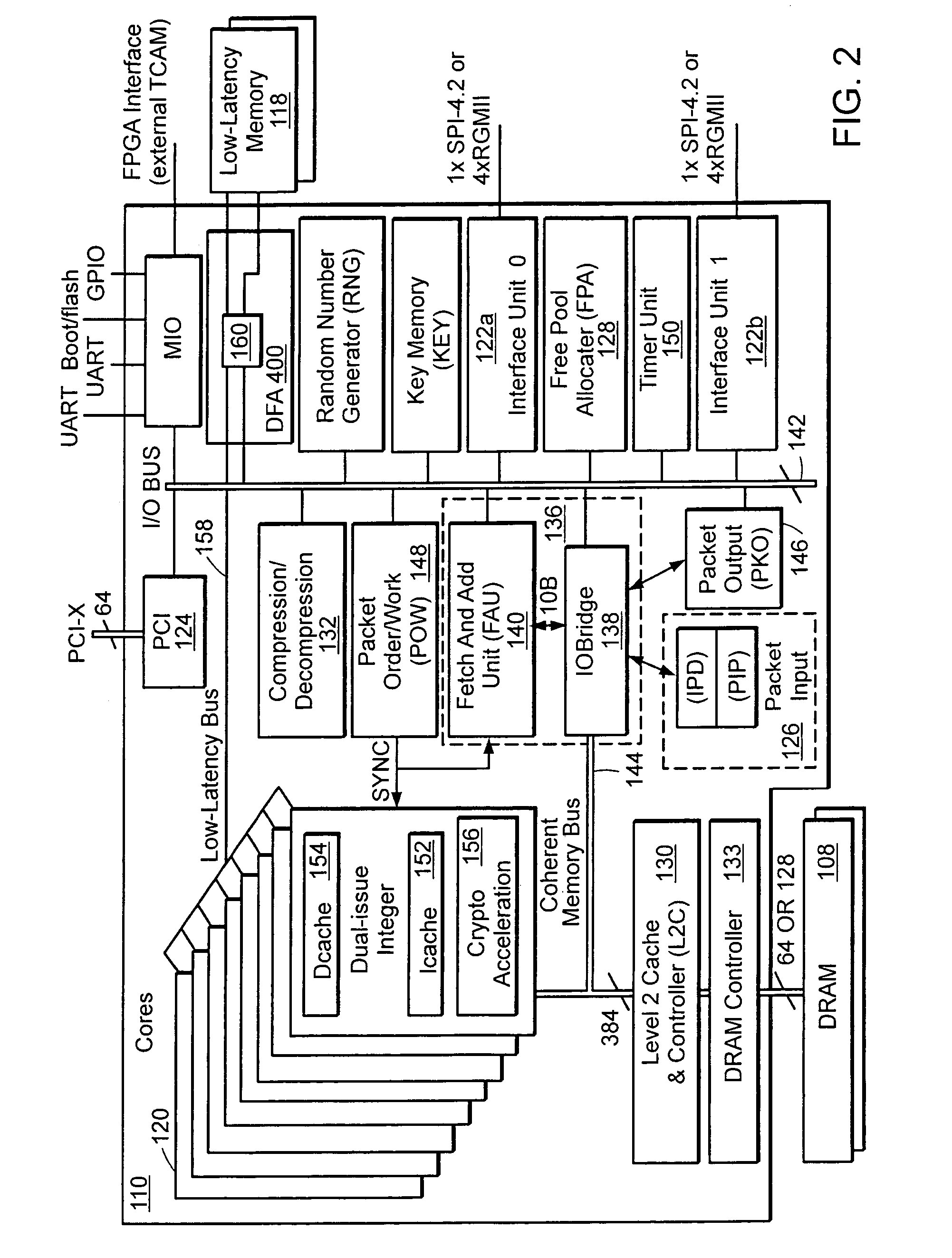Selective replication of data structures
a data structure and replication technology, applied in the field of selective replication of data structures, can solve the problems of inability to replicate all stored data, inability to meet the requirements of the application, so as to avoid delays and/or data loss, fast access times, and fast processing speed
- Summary
- Abstract
- Description
- Claims
- Application Information
AI Technical Summary
Benefits of technology
Problems solved by technology
Method used
Image
Examples
Embodiment Construction
[0033]A description of preferred embodiments of the invention follows.
[0034]Methods and apparatus are provided for accessing a low-latency memory in an efficient manner by selectably replicating a data structure within the memory. The memory includes multiple individual memory banks configured to store replicated copies of the same data structure. Upon receiving a request to access the stored data structure, a low-latency memory access controller selects one of the memory banks, accessing the stored data from the selected memory bank. Selection of a memory bank can be accomplished using a thermometer technique comparing the relative availability of the different memory banks. Exemplary data structures that benefit from the resulting efficiencies include deterministic finite automata and other data structures that are loaded (i.e., read) more often than they are stored (i.e., written).
[0035]FIG. 1 is a block diagram of a security appliance 100 including a network services processor 1...
PUM
 Login to View More
Login to View More Abstract
Description
Claims
Application Information
 Login to View More
Login to View More - R&D
- Intellectual Property
- Life Sciences
- Materials
- Tech Scout
- Unparalleled Data Quality
- Higher Quality Content
- 60% Fewer Hallucinations
Browse by: Latest US Patents, China's latest patents, Technical Efficacy Thesaurus, Application Domain, Technology Topic, Popular Technical Reports.
© 2025 PatSnap. All rights reserved.Legal|Privacy policy|Modern Slavery Act Transparency Statement|Sitemap|About US| Contact US: help@patsnap.com



